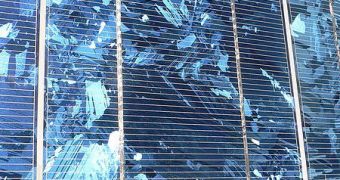An international research effort, consisting of scientists from Australia and the United States, has recently beaten the world record in terms of solar-cell efficiency by 0.3 percent, and reached a total conversion rate of 43 percent. Details of the amazing work, which has the ability to completely change the way in which we use energy sources, will be published in the September issue of the respected scientific journal Progress in Photovoltaics, ABC News reports.
The record-breaking effort was led by University of New South Wales (UNSW) Professor Martin Green. He says that the reason why better solar technology is needed is the fact that existing instruments are only capable of absorbing a small fraction of the huge energy potential that sunlight has stored for us. If we were able to harness a small percentage of the amount of sunlight coming on a single day, we could potentially sustain all energy needs on the planet for a year.
“Sunlight is made of up of little particles and these particles have different energy. A standard cell can respond to photons of certain energy and above, but not below,” Green, who is the leader of the UNSW ARC Photovoltaics Center of Excellence, explains. He adds that each of the photons in light needs to be sufficiently energetic to free an electron in the solar cells, which in turns produces electrical current. If the solar cell is therefore not sensitive to as many energy levels as possible, a slower moving photon would basically bounce off the device, and not generate any electricity.
“Cells that have a lower threshold don't convert the light as efficiently as a cell that is matched to that color. Each cell has the maximum efficiency for one particular color. Our cell works efficiency over the red end of the solar spectrum. We combined it with cells that had done well over other wavelength ranges, so in that way we were able to improve efficiency,” the expert adds, saying that the new solar cells are not based on silicon, but on elements such as gallium, indium, phosphorus and arsenic.
“There is always a trade off with the cost of efficient electricity conversion, and commercial efficiency. Our job is to improve the efficiency of the silicon cells, because it is cheaper than using five cells,” Green, who is now focusing his efforts on improving the efficiency of single solar cells, concludes. The new record was achieved using a multi-array of cells.

 14 DAY TRIAL //
14 DAY TRIAL //